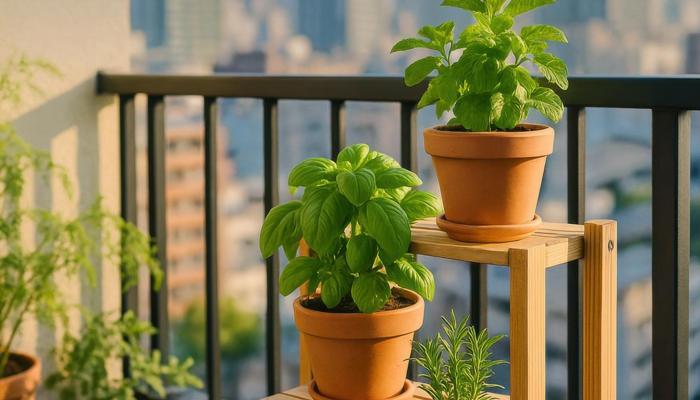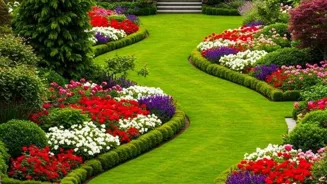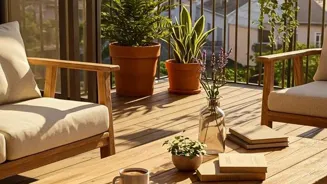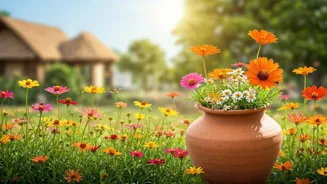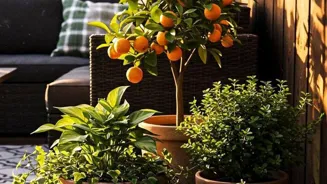Transform your terrace into a thriving urban jungle with these 5 essential tips! Read on to create your green escape
Mumbai, India – Forget those sprawling gardens! In today’s city life, space is a luxury.
But that doesn't mean you can't cultivate your own little slice of nature. Terrace gardening, or rooftop gardening as some call it, is blooming in Indian cities.
People are transforming their small balconies and terraces into green havens. It brings joy, fresh air and even a little bit of your own homegrown food. With a bit of planning and these essential tips, even the smallest terrace can become a thriving urban jungle.
So, get your hands dirty and get ready to create your own green escape! Let’s make our city look green and lively.
Choose plants based on sunlight for a thriving terrace garden
First, sunshine is your best friend! Before you even think about plants, observe your terrace space carefully. How much direct sunlight does it get? Some plants need full sun (at least six hours a day), while others prefer shade.
Knowing this will help you choose the right plants that will actually flourish in your space. Also, check how the wind blows on your terrace. Is it very windy? This can dry out plants quickly. If it is windy, you might need to create some windbreaks using trellises or screens.
Remember,happy plants make a happy gardener. Choose your plants according to the directions of the sunlight available. If you have less sunlight, choose low light plants such as snake plant, ZZ plants or money plants. Sunlight is the most essential thing for any plant to grow.
Make sure your chosen plants are getting the required sunlight.
Choose right containers for plants, consider size and material
Next, think about containers. When space is tight, every inch matters. Choose containers that are the right size for the plants you want to grow. Don't put a small plant in a giant pot, or a big plant in a tiny one! Also, consider the material of the container.
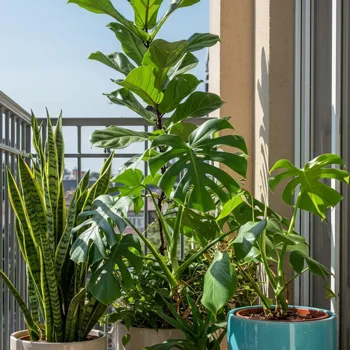
Terracotta pots look nice but can dry out quickly. Plastic pots are lighter and retain moisture better. Hanging baskets are also a great option for small spaces, allowing you to grow trailing plants like petunias, strawberries or herbs vertically.
Wall-mounted planters are another clever way to maximize space and add visual interest. You can even get creative and use recycled materials like old tires or plastic bottles as planters. Remember to ensure proper drainage in all your containers to prevent root rot.
Terrace gardens need proper weight distribution to avoid damage
Thinking about the weight is important. Terrace gardens can become surprisingly heavy, especially when the soil is wet! Before you start piling up containers, check the weight-bearing capacity of your terrace.
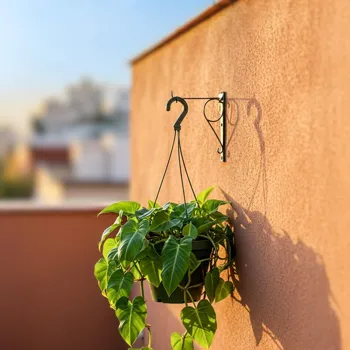
If you're unsure, it's best to consult with a structural engineer to ensure your terrace can handle the load. Spread the weight evenly by placing heavier containers near load-bearing walls. Use lightweight potting mix instead of regular garden soil to reduce the overall weight.
You could also consider using self-watering planters, which require less frequent watering and therefore reduce the weight of the soil. Remember safety always comes first. Make sure the additional weight on your terrace is under the weight recommendations for your building.
Avoid placing all the pots at one place, spread them equally throughout.
Healthy plants need good soil and proper watering to thrive
Now, let's talk about soil and water. The right soil is crucial for healthy plants. Don't just use any old soil from your backyard! Use a good quality potting mix that is light, well-draining and rich in nutrients. You can also add compost or vermicompost to improve the soil's fertility.
Watering is another key aspect. Water your plants regularly, but don't overwater them. Overwatering can lead to root rot, which can kill your plants. Check the soil moisture before watering – if it feels dry to the touch, it's time to water. Water deeply, so the water reaches the roots.
Consider using a watering can or a drip irrigation system to water your plants efficiently. You can add liquid fertilizer during watering so now your plant will get water and nutrition. This method will help your plant to grow quicker and healthier.
Pest and disease control in gardening with organic methods
Pest and disease control is a topic to be wary of. Even in a small terrace garden, pests and diseases can be a problem. Keep an eye out for common pests like aphids, mealybugs and spider mites. You can control them using organic methods like neem oil or insecticidal soap.
Regularly inspect your plants for any signs of disease, such as yellowing leaves or spots. Remove any infected leaves or plants promptly to prevent the disease from spreading. Encourage beneficial insects like ladybugs and lacewings, which prey on harmful pests.
You can also create a pest-repellent spray using garlic, onion and chili peppers. These sprays are a safe and effective way to keep pests away from your plants. A healthy plant will attract less pests. Make sure your plant has enough nutrients and is healthy from the inside.
Create a personal oasis with colourful plants and decorative elements on your terrace
Finally, don't forget to add your personal touch! Your terrace garden should be a reflection of your personality and style. Add colourful flowers, interesting foliage plants and maybe even a water feature or a small seating area. Arrange your plants in a way that is visually appealing.
Use different heights, textures and colours to create a dynamic and interesting space. Add some decorative elements like pebbles, stones or small sculptures to enhance the aesthetic appeal of your garden. Most importantly, enjoy the process of creating and maintaining your terrace garden.
It's a rewarding experience that will bring you joy and connect you with nature, even in the heart of the city. So, follow these tips, get creative and transform your terrace into a thriving urban jungle!
AI Generated Content. Glance/InMobi shall have no liability for the content